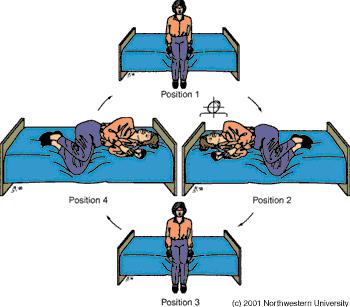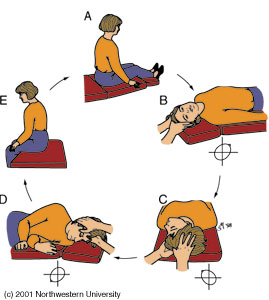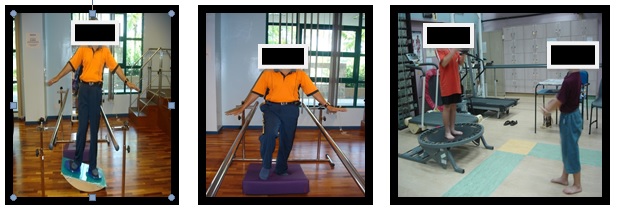What is Vertigo?
Vertigo is a false sensation that the self, the surroundings, or both are moving or spinning, usually accompanied by nausea and loss of balance.
Vertigo results from disorders that affect the inner ear or parts of the brain involved in balance.
What are the causes of vertigo?
It can be from the peripheral or central causes or combine both.
Peripheral cause:
Vertigo caused by disorder of the inner ear or vestibular system.
Vestibular system composed of the semicircular canals, the vestibule (Utricle and saccule) and vestiburlar nerve.
The most common cause of peripheral vestibular disorder is benign paroxysmal positional vertigo (BPPV), which accounts for 32% of all peripheral vertigo. Other causes include Meniere’s disease, Labryrinthitis, vestibular neuronitis.
Central cause:
Vertigo cause by disorder to the lesion in the brainstem or cerebellum. The common cause of central disorder is Transience ischaemic attack, vestibular schwannoma/ cerebellar tumours, cervical spine disorder, migraine headaches, multiple sclerosis and cerebral dysfunction.
Who is prone to Vertigo?
The prevalence of vertigo rises with age and is about two to three times higher in women than in men.
-
Affect 2.5% of the general population (US) (Hain 2009)
-
1 in 5 adults are affected ( Yardley 1998)
-
Most common symptom in patient > 65 years old (65%)
What are the sign and symptoms of Vertigo?
-
Spinning
-
Dizziness
-
Nausea
-
Vomitting
-
Imbalance
-
Blurred vision
-
Difficulty in walking
What are the common vertigo diagnosis treated by Physiotherapist?
-
Benign paroxysmal positional vertigo (BPPV)
-
Unilateral Vestibular hypofunction ( eg vestibular labrynthitis, neuronitis, meniere’s disease)
-
Bilateral vestibular loss (medication/ ototoxicity, Hereditary)
-
Psychogenic vertigo
-
Unclear vestibular diagnosis. ( post traumatic vertigo, multifactorial disequilibrium of the elderly)
How can physiotherapy help in vertigo?
Physiotherapy plays an important role to hasten the recovery of patients suffering from vertigo.
Physiotherapy will carry out the assessment to determine what exactly the problems/ impairment presented and decide what treatment to give.
The aims of physiotherapy treatment is comprises of :
-
Reduce motion provoked dizziness (Shepard& Telian, 1993)
-
Improve gaze stability (Herdman ,2003)
-
Increase balance and walking functions ( Krebs et al, 2003)
-
Improving fitness and endurance
-
Reduced fall risks (Hall et al, 2004)
-
Repositioning techniques for BPPV(Benign paroxysmal positional vertigo)
-
Increase general activity levels
What are the physiotherapy intervention?
Physiotherapy treatment depends on the problem/ impairment presented by the patient.
Treatment:
-
May involve Habituation exercises
-
May involve adaptation exercises
-
May involve balance exercises
-
May involve gait training
-
May involve strengthening exercises
-
May involve flexibility exercises
-
May involve canalith repositioning maneuver
-
May involve fall prevention
-
May involve patient education
Physiotherapy will carry out a thorough examination to determine what else may be causing your dizziness/ vertigo and how it may be treated.
Once you are diagnosed, your evaluation will include a treatment plan designed to meet your goals and offer relief for your discomfort.
An accurate diagnosis of vertigo generally provide a high rate of success in a short-term duration.
Treatment that may offered in vestibular rehabilitation physiotherapy
-
Vestibular adaptation exercises to improve vision with head movement.

Source : www.dizziness-and-balance.com - Patient in sitting , viewing a stationary object/ target, while the head is moving from right and left/ moving upward and downward.
- Target should be clear during the exercise.
- Exercise should begin gradually, slowly increase speed , target distance (near/far), frequency and background.
-
Brandt daroff exercises to reduce dizziness.

Source : www.tchain.com
-
Canalith Repositioning Maneuver / Epley’s Maneuver to reduce dizziness.

Source : www.tchain.com
-
Postural stabilization exercises to improve balance strategies.

-
Gait training to reduce dizziness during walking.

Source : www.drsumitmrig.com - Walking in a straight line while looking sideway.
- Walking in a straight line while looking upward and downward.
- Walking while tossing ball from side to side.
References
-
Epley, JM (1992). The canalith repositioning procedure: For the treatment of benign paroxysmal positional vertigo. Otolaryngol Head Neck Surg.
-
Yardley, L, Beech,S, Zander, L et al (1998). A randomized controlled trial of exercises therapy for dizziness and vertigo in primary care. Brit j Gen Pract.
-
Whitney SL , Rossi MM (2000). Efficacy of Vestibular Rehabilitation.Otolaryngol Clin North Am.
-
Herdman, S.J,et al.(2003). ‘Recovery of dynamic visual acuity in unilateral vestibular hypofunction.’ Arch Otolaryngol Head Neck Surg.
-
Krebs, D.E, et al.(2003). ‘Vestibular rehabilitation: useful but not universally so’. Otolaryngol Head Neck Surg.
-
Hall CD, Schubert MC. Herdman SJ. (2004). Prediction of fall risk reduction as measured by dynamic gait index in individuals with unilateral vestibular hypofunction. Otology and Neurology.
-
Mira E (2007). Improving the quality of life in patient with vestibular disorder: the role of medical treatments and physical rehabilitation. Int J Clin Pract.
Source of images
-
Timothy C. Hain (2011). Vestibular Rehabilitation Therapy (VRT). Retrieved July 5, 2013 from www.dizziness-and-balance.com
-
Mr James w Fairley (2010). Vestibular Rehabilitation Exercises. Retrieved July 5 2013 from entkent.com
-
Timothy C. Han (2003). Benign Paroxysmal Positioning Vertigo.retrieved July 5, 2013 from www.tchain.com
-
Dr Gurmajor Singh (2010). Approached to patient with vertigo/dizziness. Retrieved July 5, 2013 from drsumitmrig.com
| Last Reviewed | : | 23 August 2019 |
| Writer | : | Se To Phui Lin |
| Accreditor | : | YBhg. Datin Hjh. Asiah bt. Mohd Hashim |
| Reviewer | : | Halimah bt. Hashim |







